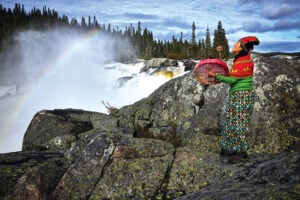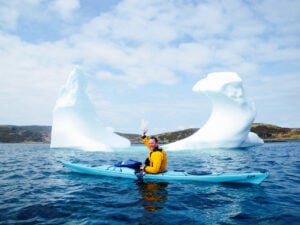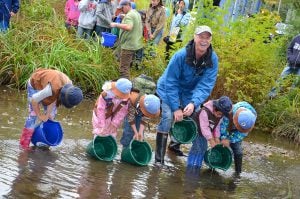“There’s no clear line between religion and fly fishing,” wrote Maclean, capturing the passion and mystique behind the pastime. I’m more concerned with the line lassoing above my head as I attempt to cast into the stream, and not say, Sky Richard’s eyeball. He patiently shows me how to roll, spey and fast cast, how to lower my rod and strip the fly line to mimic an attractive shrimp. Then, knee-deep in the water, I cast upstream and let the current take my fly into the shadows, where I don’t have to wait long. “I’ve got one!” “Got one!” “Got another!” “Got one!” “Here’s another!” Here’s the thing about landing a helicopter by a pristine mountain stream in a wilderness that nobody else can access.
There’s a lot of fish. You cast, you catch, and then release the fish to continue its spawning journey. Much thought goes into the type of weighted lure – the fly – selected, and I quickly learn that some flies are better than others. Right now, the shinier ones are more successful than the feathered ones, but I confirm that both are easy to snag into a submerged rock. All this action allows visitors to quickly hone their fishing skills, graduating to tussles with rarer and bigger cohos and, if lucky, an 80lbs chinook. Although ‘quickly’ and ‘fishing’ don’t usually go together: this is a sport of patience, employing finesse and subtle technique. Sky tells me the best part of his job is watching anglers grow and develop skills during their visit. Seventy percent of his clients are repeat clientele, many flying in from the US and Europe. For fly fishing enthusiasts, you can’t beat this combination of stunning nature, exclusive access, and abundant fish.









